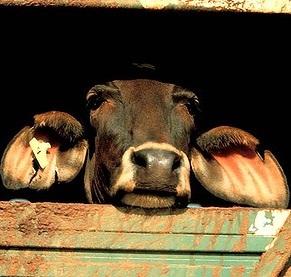Livestock guide for better way to load
 The Australian Livestock and Rural Transporters’ Association has released the final version of its national ‘Guide for Safe Design of Livestock Loading Ramps and Forcing Yards’.
The Australian Livestock and Rural Transporters’ Association has released the final version of its national ‘Guide for Safe Design of Livestock Loading Ramps and Forcing Yards’.
The guide is now available to all interested parties free of charge, after being officially launched in Victoria last weekend at the Livestock and Rural Transporters of Victoria Annual Conference in Bendigo.
It has been revised based on sixteen formal submissions and a number of stakeholder suggestions.
“The purpose of the voluntary guide is to promote safer workplaces for people in contact with livestock loading facilities and to improve animal welfare outcomes. It summarises the potential hazards of livestock loading ramps and forcing yards and practical examples of ways to control associated risks for different types of facilities”, said ALRTA National President, Grant Robins.
“General principles are identified as well as a series of model ramp designs, ranging from low-cost basic designs for farms to more advanced commercial designs”, he said.
Over recent years, there has been a dramatic change in expectations for workplace health and safety and animal welfare.
New legislation now requires that workplace safety risks be controlled as far as is reasonably practicable. Australian Animal Welfare Standards require livestock handling facilities be constructed, maintained and operated in a way that minimises risks to the welfare of livestock.
President of the Livestock and Rural Transporters Association of Victoria, John Beer, has been a driving force behind the development of the guide.
“Loading ramps are the most dangerous area of livestock holding facilities. The level of unnecessary risk associated with crushing, lacerations and slips, trips and falls at some facilities is no longer acceptable”, said Mr Beer.
“We have produced this guide in close consultation with key stakeholders in the livestock supply chain including producers, transporters, feedlots, saleyards, exporters, equipment manufacturers, welfare groups and safety authorities.”
“ALRTA will review the guide every two years to keep up with continual industry innovation such as the truck loading platform now in use at MC Herd Meat Wholesalers and Abattoirs in Geelong that assists drivers to manage animals entering or exiting the vehicle without needing to climb on, or enter, the crate themselves.”
“Improving safety around livestock facilities is a shared responsibility and judging by the level of interest in this guide from across the supply chain I know it will make a big difference,” he said.








 Print
Print